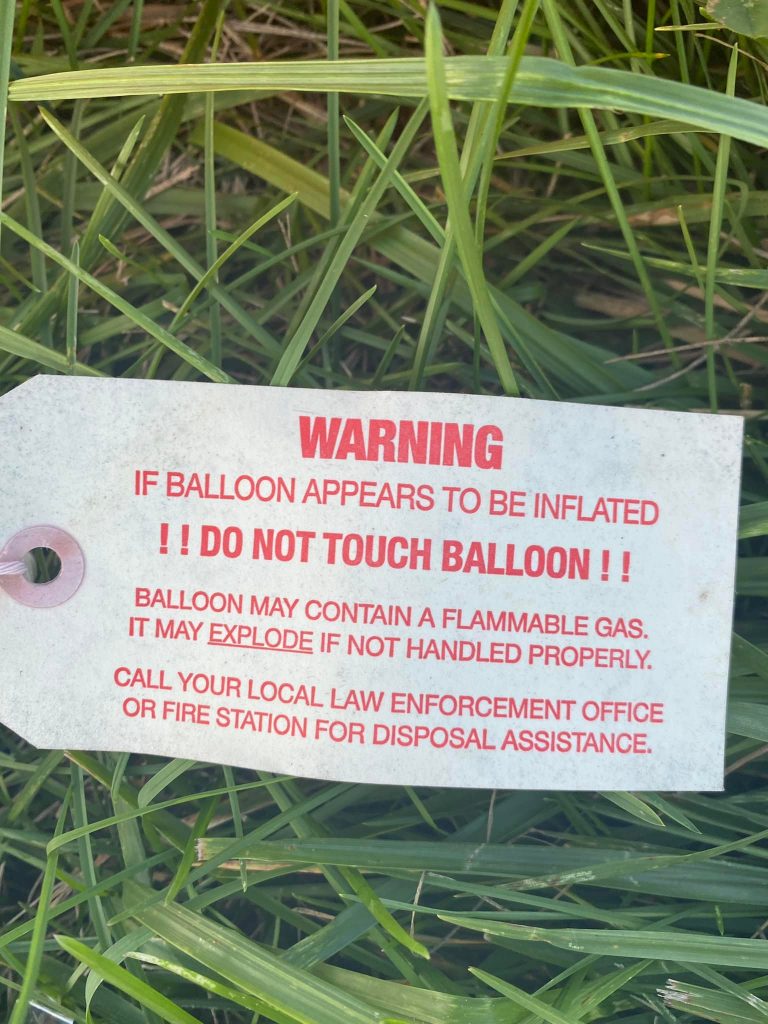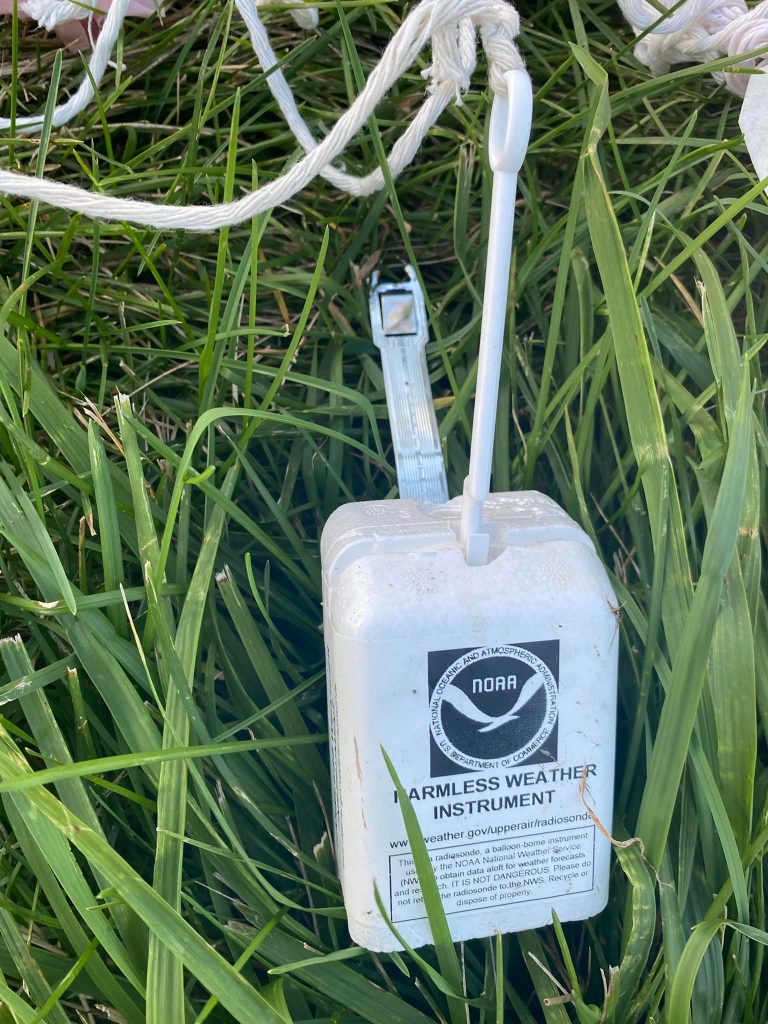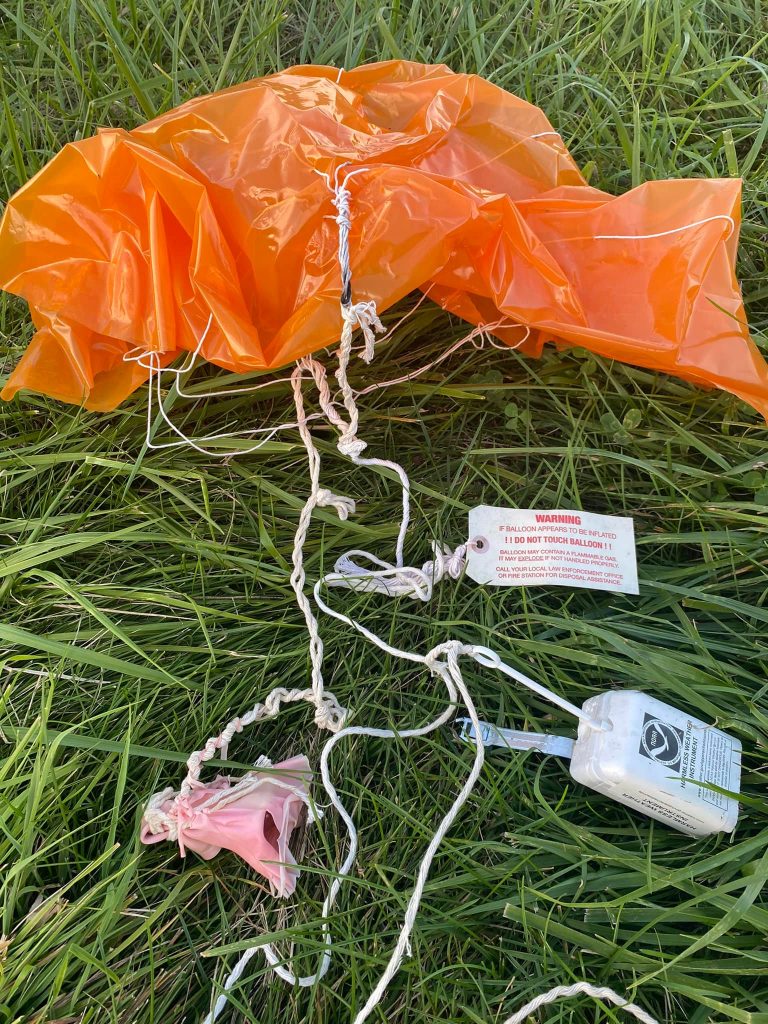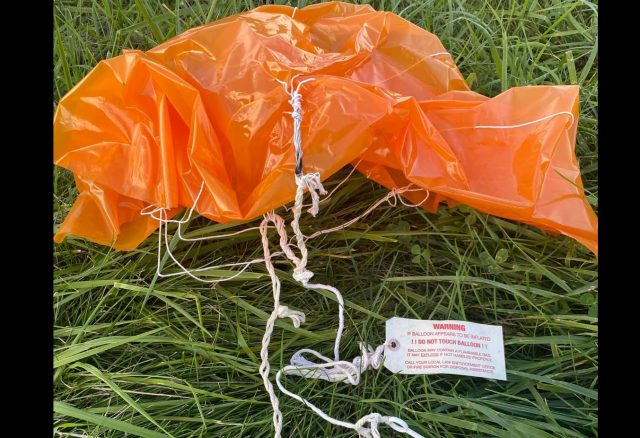Fayette – A weather balloon dropped into a field in Fayette county on Thursday a local located it and called the fire department.
According to an online post Tammy Mayer says she found the ballon in the area of 35 and Bush road. Attached to the balloon was a warning it said, “Do not touch ballon. Ballon may contain a flammable gas it may explode if not handled properly.”

The reason for the warning is that sometimes balloons are filled with hydrogen a gas lighter than helium to float the balloons. It has not been as common to use, but with shortages of helium and hydrogen, the departments are making due.
Twice a day, every day of the year, weather balloons are released simultaneously from almost 900 locations worldwide! This includes 92 released by the National Weather Service in the US and its territories. The balloon flights last for around 2 hours, can drift as far as 125 miles away, and rise up to over 100,000 ft. (about 20 miles) in the atmosphere!

Weather balloons, which are made of latex or synthetic rubber (neoprene), are filled with either hydrogen or helium. The sides are about 0.051 mm thick before release and will be only 0.0025 mm thick at typical bursting altitudes! The balloons, which start out measuring about 6 ft. wide before release, expand as they rise to about 20 ft. in diameter! An instrument called a radiosonde is attached to the balloon to measure pressure, temperature and relative humidity as it ascends up into the atmosphere. These instruments will often endure temperatures as cold as -139°F (-95°C), relative humidities from 0% to 100%, air pressures only a few thousandths of what is found on the Earth’s surface, ice, rain, thunderstorms, and wind speeds of almost 200 mph! A transmitter on the radiosonde sends the data back to tracking equipment on the ground every one to two seconds. By tracking the position of the radiosonde, we can also calculate wind speed and wind direction. The radiosonde is powered by a small battery.

A parachute, attached to the end of the balloon, allows the radiosonde to fall slowly to the ground at speeds less than 22 mph after the balloon bursts. Each radiosonde contains a mailing bag and instructions on what to do if you find one. About 20% of the 75,000 radiosondes sent up each year in the US are found and returned. These instruments are fixed and reused, saving the government money.
Weather balloons are the primary source of data above the ground. They provide valuable input for computer forecast models, local data for meteorologists to make forecasts and predict storms, and data for research. Computer forecast models which use weather balloon data are used by all forecasters worldwide, from National Weather Service meteorologists to your local TV weatherman! Without this information, accurate forecasts beyond a few hours would be almost impossible!













